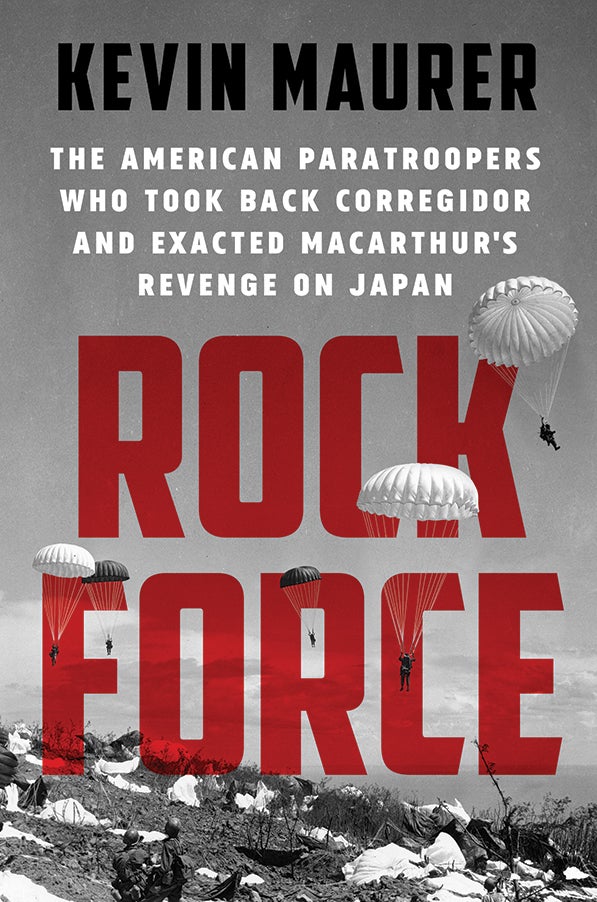March 2021 Book Reviews
March 2021 Book Reviews
Failed Iran Mission Begets Command

Phoenix Rising: From the Ashes of Desert One to the Rebirth of U.S. Special Operations. Col. (Ret.) Keith Nightingale. Casemate. 336 pages. $34.95
By Col. Kevin Farrell, U.S. Army retired
There is probably no aspect of military affairs that inspires as much interest, intrigue and, at times, controversy than special operations.
Many ARMY magazine readers undoubtedly remember or are familiar with the failed mission to rescue 52 U.S. Embassy personnel being held hostage in Iran. Often referred to by the name of the landing site, Desert One, Operation Eagle Claw occurred in central Iran on April 24–25, 1980.
This daring but disastrous raid ultimately led to the creation of the U.S. Special Operations Command (USSOCOM) and serves as the organizing focus of retired Col. Keith Nightingale’s latest release, Phoenix Rising: From the Ashes of Desert One to the Rebirth of U.S. Special Operations.
Operation Eagle Claw was a complex plan that included six Air Force special transport aircraft, eight modified Marine Corps transport helicopters, inflight refueling, the USS Nimitz carrier battle group and a strike force of Army Delta Force soldiers, Special Forces soldiers and Army Rangers, as well as a vast array of support from the armed services and the CIA.
Maintaining secrecy and avoiding detection by Iranian radar and Iranian civilians in the staging area was paramount. Almost from the beginning, things went awry because of severe sandstorms, Iranian smugglers and an Iranian passenger bus. However, helicopter mechanical failures and a catastrophic collision between an Air Force C-130 Hercules transport carrying fuel and a Navy RH-53D Sea Stallion helicopter turned Eagle Claw into a deadly debacle.
Nightingale was a deputy operations officer on the joint task force created to accomplish Operation Eagle Claw and commanded by Maj. Gen. James Vaught. Most of Phoenix Rising is taken from diary entries or events relayed to the author. Readers expecting a conventional history will be surprised because the flow of the book, like its subject matter, is unconventional. Suspense builds even though we know in advance that Eagle Claw will fail.
Perhaps the most gripping part of the book covers the helicopter rotor blade striking the tail of the transport aircraft, resulting “in a sporadic string of explosions that shreds the thin aluminum skin of the disintegrating C-130.”
Forthright opinions, analysis, “personal speculation” on why Eagle Claw failed and even harsh criticisms can be found throughout Phoenix Rising. In particular, the chief of naval operations is condemned for his lack of cooperation, while the Army chief of staff, Gen. Edward “Shy” Meyer, is praised for his vision and support.
The book’s conclusion concerns the tenuous birth of special operations forces from the ashes of the failed mission at Desert One. Although the book has an “inside baseball” feel, it provides insight on the personalities and politics that led to creation of USSOCOM despite significant opposition within DoD. Although the command is accepted today as an integral part of the defense establishment, Nightingale makes it clear that its creation was far from a certainty.
Divided into five sections and an astonishing 142 short chapters, along with six appendices, one of which has 10 subappendices, Phoenix Rising is engaging and a quick read. It is appropriate for anyone with an interest in international terrorism and the development of USSOCOM.
Col. Kevin Farrell, U.S. Army retired, is the former chief of military history at the U.S. Military Academy at West Point, New York. He commanded a combined arms battalion in Iraq and has a doctorate in history from Columbia University, New York.
* * *
Meet the Men Who Led US in World War I

Pershing’s Lieutenants: American Military Leadership in World War I. Edited by David Zabecki and Douglas Mastriano. Osprey Publishing. 368 pages. $35
By Maj. Kyle Hatzinger
David Zabecki’s and Douglas Mastriano’s Pershing’s Lieutenants: American Military Leadership in World War I provides a glimpse of some of the men who fought in Gen. John Pershing’s American Expeditionary Forces and later served the U.S. in various capacities both in and out of uniform.
Comprised of 22 short chapters divided into seven categories, the content and organization of Pershing’s Lieutenants will appeal to readers largely unfamiliar with World War I and likewise serve the desires of more seasoned history fans seeking to expand their knowledge of the subject.
The introduction provides a quick overview of World War I but devotes most of its space to Pershing’s place in history and makes the case for why he deserves more study, citing his preparation for and conduct in leading the American Expeditionary Forces (AEF) in World War I.
Supporters of the Army’s current efforts on talent management and merit-based promotions will enjoy reading how President Theodore Roosevelt promoted Pershing in 1906 ahead of over 800 officers more senior in grade from captain to brigadier general, positioning him to eventually assume command of the AEF before it sailed for France in 1917. The reader will note others throughout the book who received advancement in line with their proven abilities, along with complaints that the Army’s promotion system needed to do a better job promoting based on merit rather than time in grade.
Following the introduction, the book jumps into the biographies of Pershing’s “lieutenants.” (Note that these men were not lieutenants at the time but senior leaders serving under Pershing in the AEF.) The biographies are divided into seven sections: Future Army Chiefs of Staff, Future Commandants of the Marine Corps, Senior Staff Officers, Army Commanders, Corps and Division Commanders, Specialist Officers and Regimental Officers.
Short biographies of the authors of each chapter will familiarize the reader with the amount of expertise that contributed to this book’s publication. This expertise shows through in the chapters, with interesting details tightly woven into a condensed narrative about each subject’s life. With each chapter ranging in length from 10 to 15 pages, the authors make the most of their space to provide a good overview on their subject.
The chapters balance each subject’s service in World War I and the course of their life afterward. The reader will enjoy seeing where and how some of these men intersected in France, such as Lt. Col. Fox Conner and Pershing’s aide, a captain by the name of George Patton Jr., while establishing the AEF’s General Headquarters in 1917. While many are familiar with Patton’s rise to four-star general, Conner retired as a major general but is credited with mentoring future Gens. George Marshall, Dwight Eisenhower and Patton.
The reader will also note interactions that occurred long after war’s end, such as in 1945, when the Office of Strategic Services, led by World War I regimental commander Col. William “Wild Bill” Donovan, was dissolved by a former captain from the AEF’s 35th Division who became president: Harry Truman.
Pershing’s Lieutenants is an excellent primer for advanced study into some of the individuals discussed in the book. It provides a basis to expand upon the work done by the authors to shed additional light on these personalities. The book’s format also provides a framework for others to research and compile stories of others who served in the AEF and later contributed to the nation both in and out of uniform.
Maj. Kyle Hatzinger is a force manager with the Futures and Concepts Center, Fort Eustis, Virginia. Previously, he served as a rifle platoon leader and tank company commander in Iraq, as well as an instructor in the Department of History at the U.S. Military Academy at West Point, New York.
* * *
Parachute Regiment Retakes ‘the Rock’

Rock Force: The American Paratroopers Who Took Back Corregidor and Exacted MacArthur’s Revenge on Japan. Kevin Maurer. Dutton Caliber. 304 pages. $28
By Command Sgt. Maj. Jimmie Spencer, U.S. Army retired
The island of Corregidor, referred to as “the Rock” by Americans, is located at the entrance of Manila Bay and has historically played an important role in the defense of the Philippines. This oddly shaped island stands almost 600 feet above the water at its highest point and stretches slightly more than 4 miles long. On Dec. 7, 1941, the day Pearl Harbor was attacked, it was an American fortress officially named Fort Mills.
Ten hours after the bombing in Hawaii, the Imperial Japanese Army invaded the Philippines, marching south with their sights set on Australia. Standing in their way were the American and Filipino soldiers defending Fort Mills. Two-and-a-half months into the battle, President Franklin Roosevelt ordered Gen. Douglas MacArthur to leave Corregidor.
Deeply disappointed, MacArthur issued a statement to his troops and the people of the Philippines: “I shall return.” It was a promise he would keep 2½ years later, courtesy of the paratroopers of the 503rd Parachute Infantry Regiment.
Rock Force: The American Paratroopers Who Took Back Corregidor and Exacted MacArthur’s Revenge on Japan is a riveting account of the intense combat to liberate the island. The defenders were expecting the Americans to attack from the sea. But this was a new age in warfare. The airplane and the parachute made it possible to deliver boots on the ground from the sky.
The airborne assault surprised and confused the Japanese army, but only briefly. Fortunately, they were distracted long enough to allow the paratroopers to land on a small landing zone, a relatively flat space called Topside that was surrounded by ravines and the sea.
Author Kevin Maurer allows the paratroopers to tell their heart-pounding stories in their own words. The stories are of intense combat against a well-entrenched defender who would rather die than surrender. Of fighting outnumbered and often outgunned. Of withstanding surprise, suicidal banzai attacks by Japanese soldiers from underground tunnels and bunkers.
Extraordinary valor on the battlefield was commonplace. The battle for Corregidor cost 228 Americans lives, with another 727 wounded or injured. Japanese casualties were steep: 4,497 died defending the island, and 119 were taken prisoner.
Rock Force is an account of an important event in American history that reads like an exciting adventure novel. It should be on the Army’s recommended professional reading list. Military historians, or anyone just looking for a great book to read, will not be disappointed.
The paratroopers of the 503rd Parachute Infantry Regiment are true American heroes who made a tremendous contribution to victory during World War II, at an equally tremendous cost. For their daring attack on Corregidor, they were awarded a Presidential Unit Citation and have since been known as “the Rock Regiment.” They are a perfect example of why our World War II veterans are referred to as “the greatest generation.”
Command Sgt. Maj. Jimmie Spencer, U.S. Army retired, held assignments with infantry, Special Forces and Ranger units during his 32 years of active military service. He is the former director of the Association of the U.S. Army’s NCO and Soldier Programs and is an AUSA senior fellow.
* * *
Troubled Southern History Drives Change

Robert E. Lee and Me: A Southerner’s Reckoning with the Myth of the Lost Cause. Ty Seidule. St. Martin’s Press. 304 pages. $27.99
By Brig. Gen. John Brown, U.S. Army retired
Retired Brig. Gen. Ty Seidule’s gripping Robert E. Lee and Me: A Southerner’s Reckoning with the Myth of the Lost Cause is required reading for those wanting to participate in the conversation concerning Confederate memorialization, the “Lost Cause,” or the troubled history of race in America.
Raised in Virginia and Georgia to revere Lee and the mythos that surrounded him, Seidule came to an epiphany later in life that carried him to an opposite sentiment. The result has been a fistful of lectures, presentations, videos and policy debates regarding Confederate memorialization at the U.S. Military Academy at West Point, New York—and this book.
Seidule develops his narrative in an autobiographical manner, progressing through his acculturation in childhood, youth, college, a career in the Army and service in the Department of History at West Point. As he describes each phase in his development as a “southern gentleman,” he weaves in a counternarrative contesting the mythology he then imbibed. The result is poignant, personal and informative. He describes so-called truths he had come to accept, and why those were in fact untrue.
Seidule’s personal vignettes are ably reinforced by historical facts and figures he musters to support his discussion. Vignettes include reactions then and now to such movies as Song of the South or Gone With the Wind, his review of a history text he used as a child, his earlier ignorance of lynchings that had occurred in towns he called home, and casual research that turned him indignant when he found out what Confederates some Army posts are named after had done.
In perhaps his most engaging anecdote, his wife, raised Catholic and apparently not sharing his upbringing, storms out of the chapel at Washington and Lee University in Virginia when she realizes “Lee is the altar.”
Seidule confesses to a “convert’s zeal” and that his “passion can verge on righteousness.” This is a thoughtful self-assessment. He is not attempting a methodical account of the causes and course of the Civil War or Lost Cause mythology. He is instead mustering personal experience and extensive research to expose misinformation about both that has become inculcated and misused in the national narrative. He quotes author John Updike’s admonition to “rub humanity’s face in the facts.” The fact he is addressing is the centrality of racism and slavery to all that had to do with the Confederacy and the Civil War.
As powerful as Seidule’s narrative is, there are places where one might want a little more history. Whether Lee committed treason, for example, does not pivot on whether he was a racist or a slave owner. It pivots on whether Virginia had the right to secede. If it did, the Union was dissolved, Lee’s previous commitment was moot, and Lee had to decide whether his loyalty was to Virginia or to the U.S. without Virginia.
Great minds, including those of the Founding Fathers, came down on both sides of the constitutional and natural right of secession. Calling Lee a traitor, it would seem, requires an examination of what was believed at the time about this foundational issue. Seidule does make a fascinating comparison of Lee’s decision with that of other Virginia-born colonels, illustrating that his choice was not inevitable.
Robert E. Lee and Me has no photographs, maps or graphics, nor does it need any. The book is amply documented and well supported by endnotes. If this book is not your start point for studying the history of the Civil War, it could well be the one that rounds out your understanding of it. It will have a central place in what we have to say going forward about the Confederacy and Confederate memorialization.
* * *
Brig. Gen. John Brown, U.S. Army retired, served 33 years in the Army, with his last assignment as chief of military history at the U.S. Army Center of Military History. The author of Kevlar Legions: The Transformation of the United States Army, 1989–2005, he has a doctorate in history from Indiana University.

